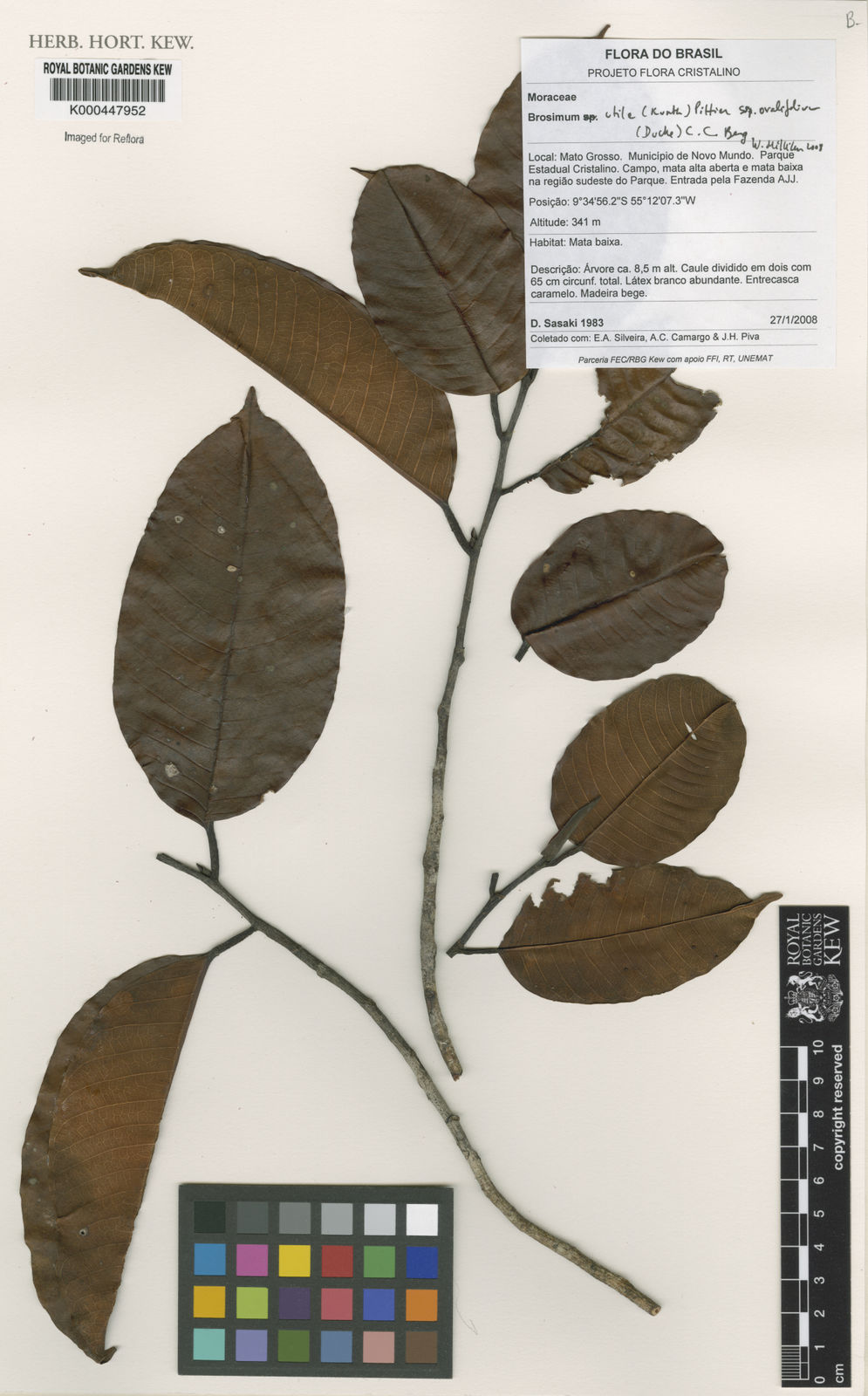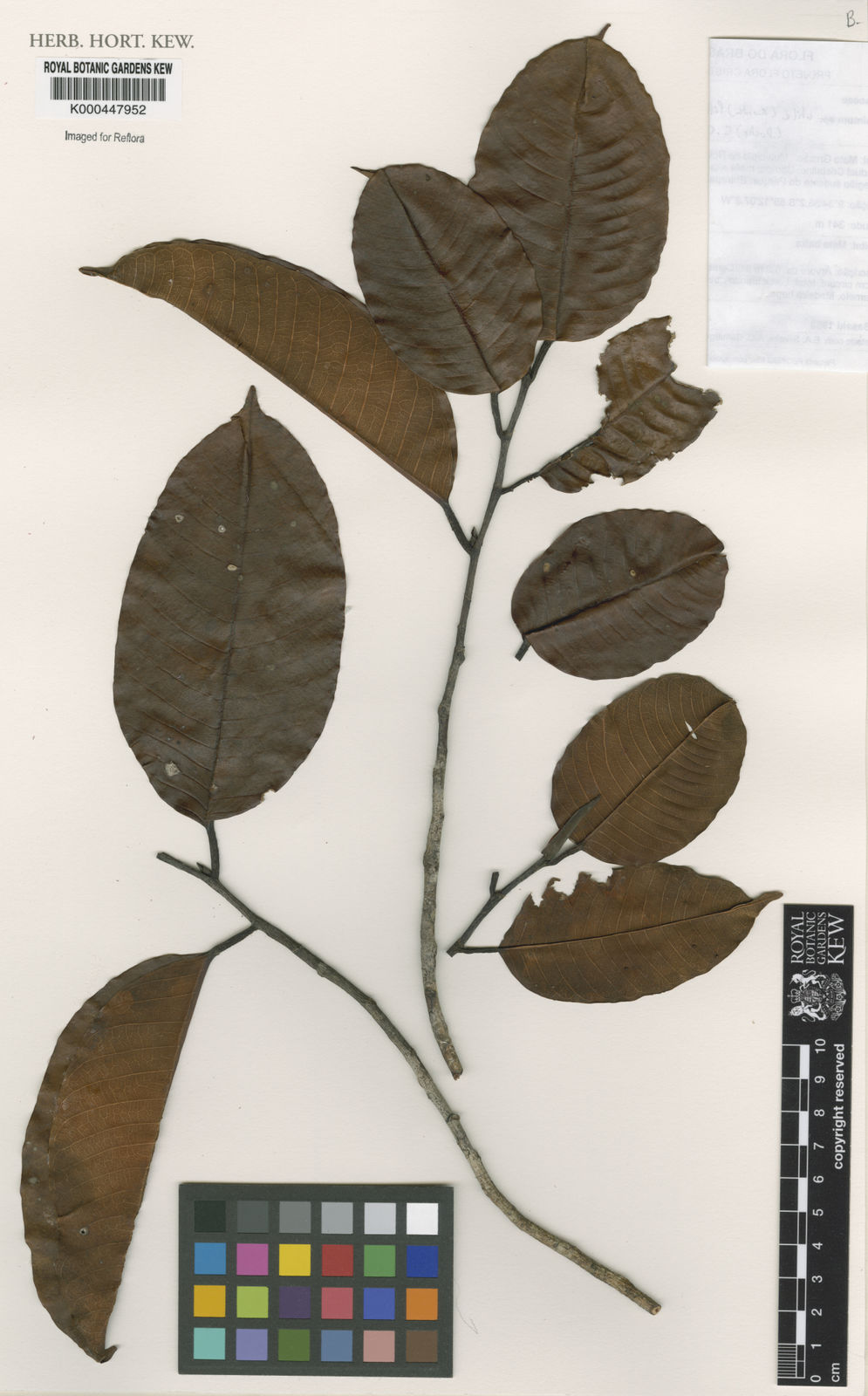Family: Moraceae
Author: (Kunth) Oken
Bibliography: Allg. Naturgesch. 3(3): 1571 (1841)
Year: 1841
Status: accepted
Rank: species
Genus: Brosimum
Vegetable: False
Observations: Panama to N. Venezuela
Description
The Cow tree, scientifically known as Brosimum utile, is a remarkable plant native to regions stretching from Panama to northern Venezuela. It belongs to the Moraceae family, a lineage of plants known for their significant ecological contributions to forest ecosystems.
This unique tree was classified under its current scientific name in the Allg. Naturgesch. 3(3): 1571 publication in 1841 by the botanist Oken, based on the original description by Kunth. The Cow tree is particularly noteworthy for its distinctive characteristics and the ecological niches it fills.
In its native habitat, the Cow tree grows robustly, displaying a sturdy structure capable of providing ample canopy cover. Its leaves are broad and dark green, contributing to its luxuriant appearance. One of the most fascinating aspects of Brosimum utile is its ability to produce a milky latex, which is why it has garnered the common name “Cow tree.” This latex can be harvested and is said to be edible, possessing a slightly sweet, milk-like flavor which local populations sometimes use as a food source.
This tree’s latex is not just a peculiar trait but also serves as a survival adaptation, enabling it to deter herbivorous predators and seal wounds to minimize infections. Additionally, the latex has been studied for potential medicinal properties, which could have broad applications given the diverse secondary metabolites produced by plants in the Moraceae family.
Ecologically, the Cow tree plays a vital role in its native forests, providing food and shelter to various species of animals and insects. Its flowers and fruits are a source of nourishment for birds, mammals, and insects, promoting biodiverse ecosystems. The seeds of the Cow tree undergo zoochorous dispersal, often being spread by wildlife, which helps in maintaining healthy forest dynamics and propagation of the species across its native range.
In conclusion, the Cow tree, Brosimum utile, remains an important and intriguing species within its native habitat. Its unique qualities not only attract scientific curiosity but also underline the importance of preserving the diverse ecosystems of Central and northern South America. With ongoing research and conservation efforts, we might continue to uncover more about its role in forest ecology and potential uses.
Common Names
En: Cow tree, Milk Tree
Ka: Რძის ხე
Kk: Sïırağaş, Сиырағаш, سىيىراعاش
Lt: Tikrasis pienmedis
Pt: Leiteira
Ru: Молочное дерево
Es: Baco, Sande, Palo De Vaca, Mastate
Uk: Молочне дерево
Synonyms
- Galactodendrum utile (Kunth)
- Piratinera utilis ((Kunth) Baill.)
Distribution
- Bolivia (native)
- Brazil North (native)
- Brazil Northeast (native)
- Brazil West-Central (native)
- Colombia (native)
- Costa Rica (native)
- Ecuador (native)
- French Guiana (native)
- Honduras (native)
- Panamá (native)
- Peru (native)
- Venezuela (native)
- Vietnam (introduced)
Additional Images
Other
Taken Sep 11, 2008 by AMAP Lab – Guyane 2022 (cc-by-sa)
Taken Sep 11, 2008 by AMAP Lab – Guyane 2022 (cc-by-sa)
Taken Sep 11, 2008 by AMAP Lab – Guyane 2022 (cc-by-sa)
Taken Sep 11, 2008 by AMAP Lab – Guyane 2022 (cc-by-sa)
Taken Sep 11, 2008 by AMAP Lab – Guyane 2022 (cc-by-sa)
Leaf
Taken Apr 19, 2012 by Nelson Zamora Villalobos (cc-by-nc)
Taken Apr 19, 2012 by Nelson Zamora Villalobos (cc-by-nc)
Taken Apr 19, 2012 by Nelson Zamora Villalobos (cc-by-nc)
Bark
Taken Apr 19, 2012 by Nelson Zamora Villalobos (cc-by-nc)

© copyright of the Board of Trustees of the Royal Botanic Gardens, Kew.

© copyright of the Board of Trustees of the Royal Botanic Gardens, Kew.
Sources
- WFO (No URL)
- IPNI (No URL)
- GBIF (https://www.gbif.org/species/8042591)
- POWO (http://powo.science.kew.org/taxon/urn:lsid:ipni.org:names:582724-1)
- PlantNet (https://identify.plantnet.org/species/the-plant-list/Brosimum utile (Kunth) Oken)









